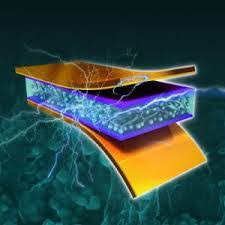Electromagnetic properties of GNR graphene nanoparticles (ultra-thin carbon) in CNTs nanotubes (based on nano-microelectronics PHD) (educational-research doctorate)
Researcher and author PhD student: Afshin Rashid

Note: Graphene nanofibers inside CNTs or multilayer nanotubes are an extremely good electrical conductor and a semiconductor that can be used in integrated circuits (ICs), small chips with millions of transistors .
Increasing the length of the graphene nanoparticle at low voltages reduces the electric current in the nanotubes and eventually creates a gap in the conduction curve. The reduction in electrical conductivity can be due to the effects of quantum interference, and the structure-governing conductivity in the presence of a gap in conductivity is described based on an intensified tunneling. On the other hand, as the width of the graphene nanotube increases with the connection points in the CNTs nanotubes with the central region, the electron flux pathways to the central region of the CNTs multilayer carbon nanotubes increase and the conductivity increases .Graphene plates, in addition to having many electrical properties, and conduction of carbon nanotubes, have properties that are unique to electric transport, such as the quantum effect of semi-correct semiconductors, minimal conduction, and so on. that compared with carbon nanotubes of greater flexibility Hstnd.haml charge in graphene behave like massless fermions show day. The above features have made graphene a suitable candidate for nanotechnology structures.
Graphene tapes with finite width are known as nanoparticles. Due to the shape of their edges, they are divided into two types: armature and zigzag. They are metallic, while graphene-reinforced nano-strips, depending on the width of the strip, can be present in both metal and semiconductor forms with a certain energy gap. Nano-tape has armature-type edges that are limited from left and right to these two semi-finished metal nanoparticles. In both structures, by increasing the number of single cells in the multilayer CNTs nanotubes, the proximity of the electron- forming electrons is reduced and a current-voltage curve is generated in the characteristic curve of a single voltage and in the gaffe conduction curve.
Conclusion:
In CNT carbon nanotubes, the physical origin of such behavior can be due to the interference effects of electron waves in the carbon branches of the graphene stream. At a certain range of electron energy, the electron waves interfere with each other and the electric current is weakened. Therefore, by increasing the length of the GNR graphene tape, a gap is created in the convection curve of the GNR graphene strips inside the CNTs multilayer carbon nanotubes.
Author: PhD Student ( Afshin Rashid)



